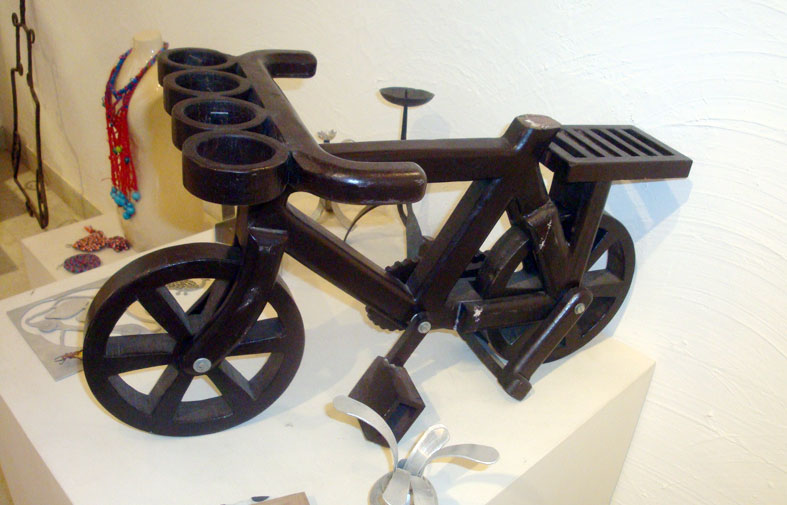
The Crafts of India are diverse, rich in history and religion.The craft of each state in India reflect the influence of different empires. Throughout centuries, crafts have been embedded as a culture and tradition within rural communities.
Present Scenario of Crafts in Rajasthan and India
Rajasthan, recognized by its Royal heritage is a prominent and well-established Craft industry. Craft remains a tradition in Rajasthan, preserved over centuries by the stronghold of the Royal Rajput family. Within the craft industry are smaller occupations. These include, fabric coloration and embellishment, decorative painting and puppetry. Craft workers see this not as an occupation, but rather a mark of respect to their heritage.
The fabric play such as tie-dyeing, resist dyeing, direct application, lehariya, traditonal block printing and mirror embroidery plays a visible part in Rajasthan. Floral motifs are seen in Interiors of homes. Moving to fauna of Rajasthan, we notice patterns imprinted on the hide of the camel and elephants. Puppetry and theatre has remained a popular form of entertainment in Rajasthan. Facial expressions are painted on a mango wood head and the body is covered in decorative, Rajasthani clothing. The strings loosely bind the arms and torso together to give flexibility for movement. These puppets usually perform in legends and mythology conveying a moral message.
SURVIVAL OF THE HERITAGE-CRAFTS
The Crafts of India have been valued throughout time; their existence today proves the efforts put into their preservation. Contemporary designers such as Ritu Kumar and Ritu Virani are constantly embedding traditional crafts into their designs. Also, there are educational institutes and organizations who educates for the crafts and their existence with design and also includes education of traditional crafts in their course curriculum to maintain this culture. Despite these efforts, the roots of these crafts, which are the rural craftsmen, are in decline. Rising costs of materials and supplies have placed many of these craft communities in financial struggle. With rising economic and political issues in India, the craft sector is struggling to uphold. Although an interest to retain the culture of crafts is seen in designers and institutions.
This is a serious concern for existence of Crafts which needs to be prioritized in framing the National policies. The major contribution one can make in revival of languishing crafts and preserving them is proper documentation of history, techniques and processes of Crafts including Entrepreneurship model to give Socio-Economic stability.
DOCUMENTING CRAFTS
Craft Documentation is a process of recording, categorizing and dissemination of information, through both graphic and written mediums. The process documents and explains the significant characteristics of a craft; the materials, process, tools and techniques involved in creating it; as well as the applications (Interior Architecture elements, Furniture, Objects and Accessories) of the Traditional and Vernacular Crafts. The recording process initiates with gathering information through literature study, followed by recording through field drawings and photographic documentation, which would later take form of a document, report or plate, depending upon the number of stages involved in order to carry out a particular craft.
Rajasthan based Craft Industry is iconic to the identity of India with many of its styles reaching the international market.
__________________________________________________________________________
ARCH students Muskan Rathi and Bidisha Das indulged in some amazing research in their breaks. They documented their work respectively in their experiences.
 Muskan Rathi, 4 yrs Jewellery Design student visited a small but leading manufacturing plant in Hisar, Haryana named Aroma paper products, boosting a variety of machines catering to different sizes of paper cups.
Muskan Rathi, 4 yrs Jewellery Design student visited a small but leading manufacturing plant in Hisar, Haryana named Aroma paper products, boosting a variety of machines catering to different sizes of paper cups.
The Raw material from Delhi at INR 100/ kg was used to design these cups. The process included rolling of sheets for the cylinder and cutting circles for the base; later combining them together by heating. During heating, the cylindrical folded parts stick to the base resulting in the final product. These cups require perfect temperature (160 degree for base and 250-285 degrees for the cylinder) to avoid paper burns. According to Muskaan, ‘It was a great exposure to a new world and I learned to see design in a new form’

B i d i s h a Das, 4 yrs F a s h i o n D e s i g n s t u d e n t researched on Shanti N i k e t a n bags, a perfect example of high quality work done by local artisans. It is characteristic of West Bengal cultural heritage. This culturally rich craft employs cutting, polishing and embossing of leather embellished with hand painting. The craft work uses appliqué, batik
and designs inspired from animal, flower, and Indian rural life. Sometimes they are excerpts taken from dance drama by RN Tagore such as CHANDALIKA, TASHER DESH, etc. Leather, raw material is nature extracted – vegetable tanned and vegetable based pigment colors and chemicals used are PCP free. The leather is later stitched into beautiful hands bags, mobile covers, belts etc as per the demand in the market. Bidisha’s experience about Knowing crafts-men, their work and co-operation in sharing their work details added a new dimension to her research and gave her a reconnect with her local roots.

